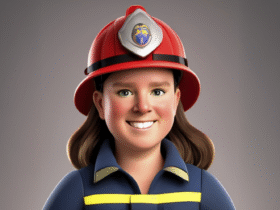It’s human adaptability that defines our endurance, and that brilliance of survival is now making inroads into the realm of architecture. As sea levels continue their relentless ascent, architects worldwide are designing structures that float with the inevitable ebb and flow of water, instead of resisting it.
The Makoko Floating System (MFS), a pioneering model developed by the NLÉ architecture practice, epitomizes this resilience. The modular system comprises prefabricated, flat-pack parts that can be assembled in two weeks by a small team, sans any heavy equipment. According to founder Kunlé Adeyemi, the MFS provides an inclusive solution for climate adaptation, ensuring the most vulnerable communities are not left behind as the world evolves.
MFS’ roots trace back to the Makoko, a central district in Lagos, Nigeria where communities live in stilted wooden structures amidst the lagoon. Inspired by their lifestyle, Adeyemi built a floating school for the residents in 2012. This floating wooden school was accessible by boat and incorporated plastic barrels as floating bases. Its demise a few years later, which the company attributed to neglect and lack of maintenance, served as a learning experience for developing the robust MFS.
One realization of the MFS concept can found in Mindelo, a port city in Cape Verde. In 2021, a semi-permanent, floating “music hub” blossomed from the city’s waters. Spread across three triangular wood and steel pavilions, the cultural center embodied the MFS vision of flexible structures serving varied purposes, from housing to education.
The concept of floating cities is gradually garnering interest on the global stage, with innovative proposals for climate-resilient floating settlements in South Korea and the Maldives promising sustainable living options. Existing examples include floating homes in Nigeria’s Lagos, the city of Rotterdam in the Netherlands, and even some ambitious “water-scrapers.”
The Nassauhaven project in Rotterdam is a testament to this growing trend. Home to 17 floating residences built by local firm Public Domain Architects (PDA), this floating street has been hailed as Rotterdam’s first floating residential area. These wooden homes, anchored to the harbor floor, offer comfort, stability, and sustainability – adapting with the daily tides and outfitted with solar panels, biomass heating, and onsite wastewater purification.
PDA’s CEO Pieter Figdor underscored this potential, citing the city’s constant struggle with rising water levels. Figdor sees building on water as not just a response but a strategy for climate adaptation. Seeking harmony with water, in his eyes, is preferable to battling nature’s force with barriers and elevated constructions.
The same ethos prevails across the architectural landscape, fueled by the growing recognition that water-related disasters will figure prominently in the foreseeable future. The United Nations has warned that entire communities and countries might vanish in the coming decades due to rising sea levels. To safeguard against this, we must begin envisioning a future where we live with water and on it.
In the race against climate change, adapting to our waterlogged future may not merely be a choice, but a necessity. As Adeyemi succinctly put it, “Why fight water when you can learn to live with it?” As his floating designs take the world by storm, that question may shape the future of the global architectural landscape.












